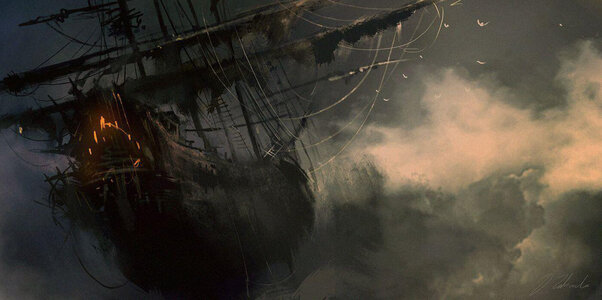Part of my research also included the painting on the front cover of the book "Het Schip van Barents" by Ab Hoving. This proved to be a little gem which I thought I would share with you. The full article is published on:
https://www.hetscheepvaartmuseum.nl/collectie/artikelen/666/ontdek-het-grootste-schilderij
The painting is entitled The Battle of Gibraltar and was painted by Cornelis Claesz. Van Wieringen (1622). 'Battle of Gibraltar' is the largest painting in the collection of the National Maritime Museum. With its five meters width and just over two meters height, it is a showpiece with a special story.
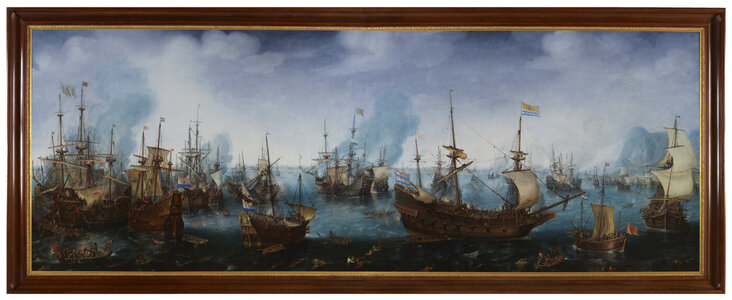 A Heavy Spanish Defeat
A Heavy Spanish Defeat
On April 25, 1607, some thirty Dutch warships attacked the Spanish fleet anchored in the bay of Gibraltar. Twelve Spanish ships went down and thousands of passengers were killed or drowned. Despite the fact that the battle was convincingly won by the Dutch, the Dutch admiral Jacob van Heemskerck suffered a shot in his leg. The defeat during this naval battle was so great that the Spaniards opted for an armistice. Ironically, while van Wieringen was busy putting the finishing touches to this painting, the war had unfortunately already resumed.
A representation of reality?
Contrary to reality, van Wieringen added a detail to the painting. In the middle of the scene a yacht is depicted which has never actually sailed there, nor did it participate in the battle. This yacht is depicted for propaganda. On the back of the ship, Van Wieringen has depicted the princely coat of arms next to the coat of arms of Amsterdam and the logo of the Admiralty.
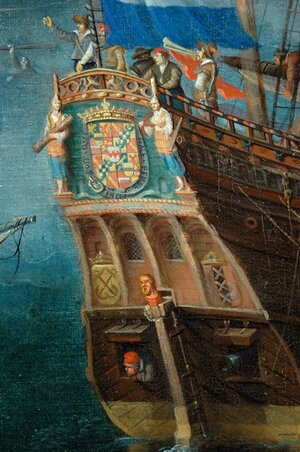
The non-existent ship. Depicted for propaganda with the princely coat of arms, the coat of arms of Amsterdam and the logos of the Admiralty of Amsterdam.
Prominently to the right of the center is the flagship of the Zeeland vice-admiral Laurens Jacobsz Alteras: the Red Lion depicted. (Close-up below)
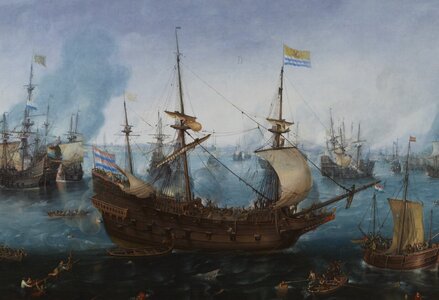
Around the side railings of the spiegel, Van Wieringen has left his name in the woodwork.
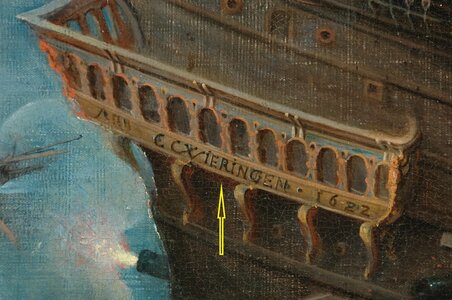
On the bow of the 'self-invented sloop', a man is fanatically attempting to retrieve a flag - that is obviously of great importance to him - from the water. It is widely assumed that it refers to the Dutch flag.
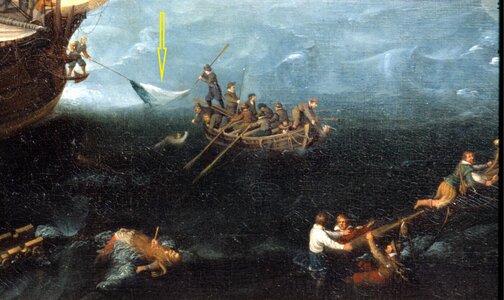
Seeing that the painting was a gift for Prince Maurits (later Prince of Orange), it was important for the client that all this was portrayed despite the fact that the reality was different. Warfare was a psychological game: it was Van Heemskerck's wish to humiliate the Spaniards in their own waters.
He rewarded the sailor who climbed into the mast with 50 silver 'reals of eights'. Unfortunately, the story ends fatefully for Van Heemskerck: he dies after the battle from the shot in his leg. He was the first naval hero to receive a grave in the Oude Kerk in Amsterdam at the expense of the Dutch state.
Van Wieringen was 2nd choice
The first choice for the maker of the desired painting went to Hendrik Cornelisz. - the founder of European marine art. Vroom though, asked for an exorbitant amount and the negotiations broke down. The Admiralty turned to Van Wieringen and asked him to make a test piece. Prince Maurits was satisfied. Van Wieringen then made a 'modello' (or miniature painting). With this he had to show in small format what the final composition of 'The battle of Gibraltar on 25 April 1607' would look like. This was to the satisfaction of all and Van Wieringen was commissioned. It would be his best work ever, fetching the highest price for a sea piece by Van Wieringen.
Water and air ultimately determined the atmosphere
Van Wieringen was not a spectator of this naval battle. The composition of this composition was done on the basis of eyewitnesses, board journals and maps. The rock of Gibraltar can be seen vaguely in the background on the right side of the painting as a geographical landmark. In the foreground, the water is deep green and further back the water becomes blue-gray and light blue. Van Wieringen did this to give depth to the performance. The chaos on the small boats, the wreckage and the drowning people contribute to the violent scene that is depicted
.












